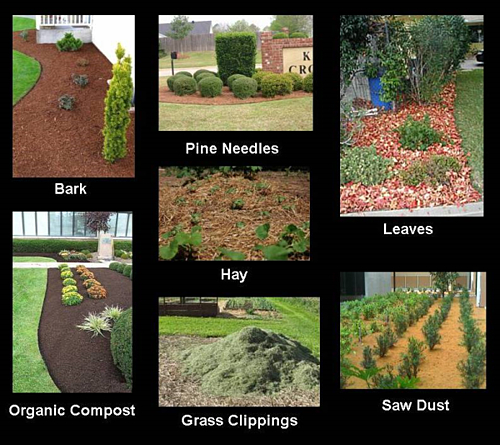What Is Garden Bark For
Mulch is the term for any organic material used as top dressings on your garden beds. The top dressing could be compost mulch, bark mulch, sawdust, shredded leaves, pine needles, grass clippings, straw hay, etc.

Landscapers use mulches for several reasons:
- During the growing season mulch discourages weeds to grow, conserves moisture in the soil, and helps maintain soil temperatures.
- During the winter mulch provides protection for perennials, roses and other sensitive plant material.
- Mulches enhance the beauty of garden beds with texture and color to complement the plant material.
Compost Mulch is made out of organic material. Use 1 to 3 inches of compost in vegetable gardens, flower and shrub beds. At the end of a growing season, compost can also be added to annual flowerbeds to improve the soil for future growth.
Bark Mulch is made out of tree bark shredded into fine, medium, and large pieces for top dressing your beds. Use 2 to 3 inches around trees and shrubs. Keep bark a few inches away from the base of a tree trunk to prevent rot or rodent damage. Bark decomposes slowly and can attract carpenter ants.
Sawdust Mulch is debris left from milling lumber. Use 2 to 3 inches of sawdust in vegetable and small fruit gardens, flowerbeds and in pathways. Be prepared to add fertilizer with a high nitrogen content if plants become sick looking. Sawdust is not very expensive and is available at most nurseries or soil stores.
Shredded Leaf Mulch is fallen leaves shredded with a leaf shredder or lawn mower. Use 2 to 3 inches around flower, vegetable or shrub beds. Do not use leaves that have diseases or insect problems or black walnut leaves that can be toxic. Leaves are readily available in your own yard and can be chopped up easily making this one of the least expensive mulches.
Pine Needle Mulch is fallen needles from a pine tree that have started turning brown. Needles take decades to decompose. Rake up the needles in your yard and apply 3 to 4 inches or more of pine needles to shrub areas and flowerbeds. Shredded pine needles work well in pathways. Pine needles are light and airy and can be used as winter mulches in rose and perennial beds. Pine Needles are also readily available in your own yard making this another least expensive mulch.
Grass Clipping Mulch is an easy way to mulch your beds. After you mow your yard spread the clippings out to dry for a day or two (to avoid wet smelly grass) and apply to your garden beds. Use 2 to 3 inches around vegetables, berries and flowers. Don't use grass clippings from lawns that have been treated with a weed killer. This also is inexpensive and readily available.
Straw Hay Mulch can be applied up to 6-8 inches in vegetable gardens, around strawberries and other small fruits. Straw can be a fire hazard and/or a source of weed seeds in the garden. Chopping the straw up will make it more attractive in your beds. This also is inexpensive and readily available especially if you have cattle.
In general:
- Mulch can be applied any time of year; however, the best time is mid-spring when the soil has warmed. If applied earlier, the soil temperature will stay low and plant growth might be delayed.
- Typically mulch should be applied 2 to 4 inches deep over relatively clean, weed-free soils. Covering existing weeds will not control them. If you have a weed problem, you can install weed barriers such as newspaper, weed fabric, or black plastic before applying mulches.
- Water soil deeply before applying mulch; never apply mulches to dry soil.
- When selecting mulch, think about availability, affordability, appearance and simplicity of maintenance.
The benefits of mulching with these organic materials discourages weeds and garden pests, conserves moisture in the soil, keeps dust from blowing around, dresses up the beds with texture and color, improves topsoil as it breaks down, and it is a layer of protection for plants against weather.
Remember you can always call Controlled Rain at 360-456-7578 to install your mulch.
What Is Garden Bark For
Source: https://www.controlledrain.com/what-is-the-difference-between-mulch-compost-and-bark/
Posted by: worrellhavoing69.blogspot.com

0 Response to "What Is Garden Bark For"
Post a Comment